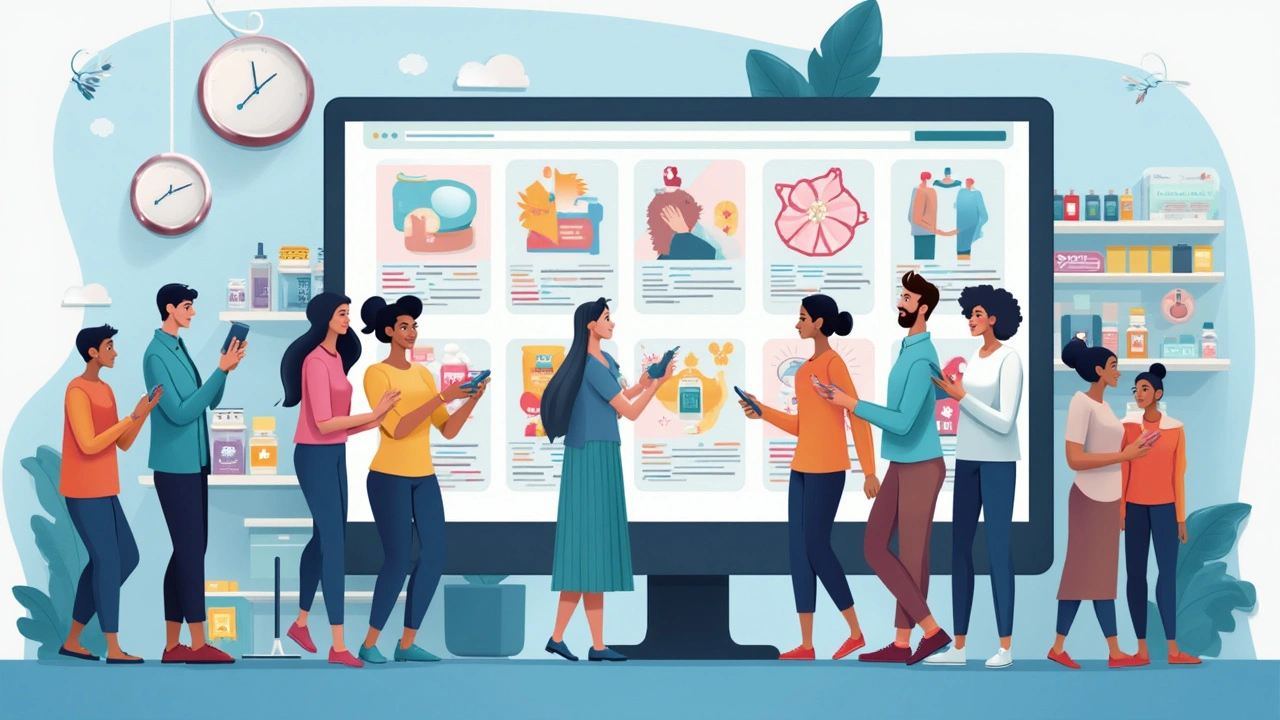Telehealth can save you time and make care easier, but not every option fits every need. You can see a provider by video, phone, secure message, or through remote monitoring devices. Some services handle prescriptions and refills, others are for quick questions. This short guide helps you pick the best telehealth option and get safe e-prescriptions when you need them.
Video visits: Best when a provider needs to see you — skin rashes, breathing checks, or a visual exam. Video gives the closest thing to an in-person visit and is often accepted by insurers.
Phone visits: Faster and easier if you have a simple follow-up or can’t use video. Good for medication questions or symptom checks that don’t need a visual exam.
Asynchronous messaging (secure chat or e-visit): Useful for non-urgent problems—ask a question, upload a photo, and get an answer later. It’s cheaper and faster for basic issues like refills or minor rashes.
Remote monitoring: Devices send data to your provider automatically — blood pressure, glucose, weight, or ECG. This works well for chronic conditions that need regular tracking.
Telepharmacy: Some online pharmacies pair a pharmacist or prescriber with delivery. Use this when you need medication refills, discreet shipping, or access to hard-to-find drugs. Always check the pharmacy’s verification and prescription policies.
Match the option to the problem. If you need a physical exam, pick video. For quick refills, messaging or telepharmacy may be fine. Check whether your insurance covers the visit and what your copay will be—you might pay less than an office visit, or the platform might charge a flat fee.
Prep like this: list your symptoms, current meds (include doses), and any recent vitals. Find a quiet, well-lit spot and test your camera, microphone, and internet before the visit. Have your ID and insurance card handy if required.
Ask these questions during the visit: Are you licensed in my state? Can you send an e-prescription to my regular pharmacy? Will you follow up if symptoms get worse? If they prescribe medicine, ask about side effects and interactions with your other drugs.
When you get e-prescriptions, use verified pharmacies only. Look for clear contact info, secure checkout (https), and a policy requiring real prescriptions from credentialed prescribers. Avoid sites that sell controlled meds without a proper prescription—state and federal rules limit those medications.
Telehealth makes care easier when you know which option fits the problem and how to prepare. If you want safe pharmacy options or guides on specific meds, check Exact-Pharma for detailed, practical articles and buying tips.

Discover 10 alternatives to Ziphealth.co that provide a wide range of online pharmacy and healthcare services. From men's and women's health to specialized subscriptions, these options offer convenience and accessibility. Explore the pros and cons of each to find the perfect fit for your telehealth needs. Whether it's prescriptions or fitness subscriptions, there's a solution for everyone.
Choline salicylate and lignocaine are transforming geriatric pain management by offering effective, non-opioid relief with minimal systemic risk. Ideal for arthritis and muscle pain in seniors, this topical combo avoids stomach and kidney side effects common with oral meds.
Learn fast, safe ways to purchase cheap generic Bactrim online, compare prices, spot legit pharmacies, and avoid common pitfalls.
Discover how proper hydration stabilizes the inner ear, reduces nausea, and keeps motion sickness at bay. Get practical water‑drinking schedules, fluid choices, and extra tips for comfortable travel.
Practical guide to using exercise to protect your liver with chronic hepatitis B-safe intensity, weekly plans, red flags, and what the science actually says.
Paul Jessup, the ex-managing director of Strand Capital SA, has been disqualified from serving as a company director for nine years. The Insolvency Service found him guilty of misusing funds from Helvetica Investments Ltd, leading to a significant financial shortfall and his subsequent disqualification.